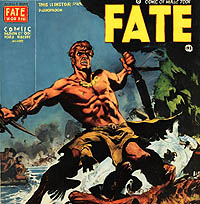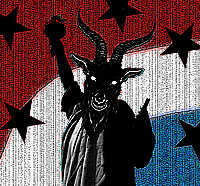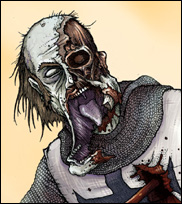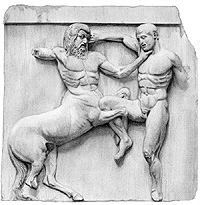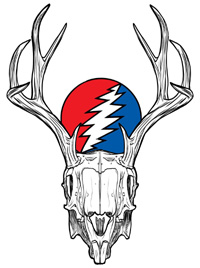I was geeking out at the book stalls yesterday and came home with a gem for the ages. In fact this book is so priceless that I will not demean it with a review! I really think this Little Color Classics book from 1942, put out by the McLoughlin Bros., and edited by Constance Holland and illustrated by Terry Day, should be reprinted by the Pentagon and issued to the press corp. I mean, it explains everything. But I, in my excitement, am getting ahead of myself.
Permit me to walk you through this little gem, put out by a children’s publisher specializing in nursery rhymes. I will offer some salient quotes from Miss Holland’s masterful narrative, followed by the statements that would constitute my commentary to the gathered innocents, should I ever get the opportunity to enlighten our youth in a Romper Room-like setting, by way of the signal honor of reading from this text…
The back cover is a collage of nursery rhymes.
The front cover depicts a boy securing the treads on his Lee Grant Tank at a work table. A picture of Revolutionary War Blue Coats defending a carriage gun forms the backdrop—perhaps meant to be a daydream. The boy is Leave it to Beaver innocent, and surely fails to realize that the real deathtraps represented by his toy will only survive if the Germans run out of .88 rounds for their deadly flak guns-turned antitank weapons. I was stricken by this cover though, because when I was that kid’s age I loved the iconic image of the Lee Grant Tank with its side canon, turret gun, and turret machine gun. It occurs to me now that this boy was the right age to be commanding a platoon in Vietnam 25 years later.
The Revolutionary War is covered in 12 pages with a full color, a two-color, and three black & white plates. The standard war heroes are lionized.
The disastrous war of 1812 is passed over, as are the embarrassing setbacks against Native Americans.
On page 13 [all of the pages are unnumbered] we learn how Mexico invaded the United States, and did such a bad job of it that the U.S. managed to win a great battle. Nothing is said about how this defensive war with Mexico resulted in the U.S gaining Arizona, New Mexico and California.
The Civil War coverage from pages 14 to 26 is pretty standard, except that the editor clearly states that the ‘question’ of states seceded the Union was ‘more important’ a question than slavery, which was addressed as an abstract concept. Two full-color, a two-color and two black & white plates make this really the best part of the book, as there were heroes named on both sides. This section seems more like history, if stilted, than the rest of the book.
On page 27 we are introduced to those peace-loving American innocents who were minding their own business out west when ‘bands of savages swooped down on helpless little settlements’. [Terry Day depicts these ‘savages’ as Eastern Woodland Indians with Hollywood Plains Indian headdresses.] Eventually, after ‘Custer and his troops made a sudden attack and defeated the band of savages’ [Black Kettle and his women and children] he died heroically at Custer’s Last Stand, which is of course illustrated.
Now class, since this book was written to promote home front activities in support of WWII, which began for the U.S. when the Japanese Imperial Navy attacked Pearl Harbor, I find it surprising that the editor, and before her the U.S. Navy, failed to inquire into the means by which these ‘savages’ had canoed across the Pacific and attacked the peaceful settlers of the United States.
Pages 28-29 give a brief on how Spain attacked the U.S. Navy, precipitating the ‘peace-loving’ United States to declare war and wipe out the Spanish Navy in four months. Teddy Roosevelt is lionized.
Nothing is said about the U.S. Army shooting Filipinos for the next few years. Now class, you know the Colt .45 1911 auto was developed because those little brown guys were all hopped up on dope and impossible to take down with a Navy .36. Since the venerable handgun that resulted from our occupation of those islands taken from Spain in our defensive war, went on to be the signature sidearm throughout WWII, which is the main focus of this book, I once again find this to be an egregious omission of the butt-kicking facts!
Pages 30-34 gives an overview of U.S. exploits in WWI. The best passage reads, ‘But when Uncle Sam is angry, he rolls up his sleeves and gets busy—gets busy quick!’
Oh great, now I have to re-imagine Uncle Sam in flannel rather than a wife-beater! You do not have to—please do not—enter that last statement into your take home notes.
The largest paragraph in the section is devoted to the fact that General John Pershing, commander of the American Expeditionary Force, received many black eyes in boyhood fights ‘But it could never be said of John Pershing that another boy had beaten him. He was always the winner.’ The narrative then goes on to proclaim the heroics of the ‘Dough Boys’ who were apparently more fanatical than any rabid fundamentalist, and consistently succeeded in frontal assaults against German defenders who outnumbered them 4 to 1….
Okay class, the way in which Pershing’s knack for always winning even though he apparently had no boxing skills, was a cunning use of metaphor to help steel a country of boys against the prospect that their brothers and fathers were being shipped out to fight armies of professional killers who had been slaughtering enemies for years. Even nursery rhyme publishers knew that WWII was going to be a long bloody war.
The WWII coverage begins with a dough boy blowing a bugle as the American Flag flutters in the wind. Page 35 begins describing how the Army is always there to protect us, and then offers, ‘Perhaps you would like to know something about life in an army camp.’ The next eight pages describe and illustrate all of the great food, and new slang words, and rewarding career choices open to the new soldier, ending with the thrill of the dress parade.
The last seven pages are devoted to all of the swell stuff, like the Lee Grant Tank on the cover [reproduced in this section in a pastoral battle scene], that the lucky soldier will get to use. This section unfolds like a wonderland of sci-fi toys to delight the tabletop militant boy in every ‘gee whiz’ way. The book goes on to explain that all of these machines cost money and that even ‘the smallest boy and girl’ can help out at home. Before closing I would like to quote some of the descriptions of blissful war from the book, rounding out the description in italics to provide context for my hypothetical class of children:
‘Great armored tanks equipped with canon and machine guns crash their way through almost any obstacle.’ Unfortunately boys, our tanks catch on fire almost every time they get hit. In fact, the Krauts call them ‘lighters’. So mail some hot dogs and marshmallows to your brother through the Red Cross!
‘There are parachute troops dropping from planes’ suspended helplessly in the air while some Nazi shoots their balls off.
‘And there are pontoon bridges that can be quickly thrown across rivers’ by some poor bastard whose kid brother is never going to see him again.
When I was a kid reading this kind of stuff, watching John Wayne wipe out Indians, Japs and Krauts, and pushing my plastic tank over the little enemy troops, I loved propaganda for the toys. Now I love it for the irony and the telling omissions. Someone could teach a whole U.S. History course out of this little book, just by filling in the blanks.


